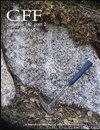The Holocene of Sweden – a review
IF 1.2
4区 地球科学
Q2 GEOLOGY
引用次数: 2
Abstract
ABSTRACT This paper presents a review on more than hundred years of palaeoenvironmental research in Sweden; from early descriptions of peat and tufa deposits in the late nineteenth and early twentieth centuries to multiproxy transfer function studies in the late twentieth and early twenty-first centuries CE. Research on Holocene climate variability has a long history in Sweden and many ideas and concepts about changes in temperature and precipitation during the Holocene originated in Fennoscandia. The Holocene climate evolution in Sweden follows a pattern in common for many northern latitude records with a rapid warming starting at the Pleistocene–Holocene boundary at c. 11 650 cal a BP, followed by the middle Holocene thermal maximum between c. 8000 and 5000 cal a BP. A change to colder and wetter conditions starts c. 4000 cal a BP and lasts until the late 1800 s CE. There is evidence for climatic anomalies such as the 8.2 and 4.2 ka BP events and the Little Ice Age (LIA) but only inconclusive evidence for other events, such as the 10.3 ka BP event. The main pattern of Holocene climate and environmental evolution is well known for most parts of Sweden, but the present review also shows that several research questions remain to be addressed.瑞典全新世——综述
本文回顾了瑞典一百多年来的古环境研究;从十九世纪末和二十世纪初对泥炭和凝灰岩矿床的早期描述,到二十世纪末和二十一世纪初的多氧传递函数研究。瑞典对全新世气候变化的研究历史悠久,许多关于全新世温度和降水变化的想法和概念起源于芬诺斯坎迪亚。瑞典全新世气候演变遵循许多北纬记录的共同模式,从更新世-全新世边界开始的快速变暖约为11 650 cal a BP,然后是全新世中期的最大热值约为8000至5000 cal a BP。向更冷、更潮湿的条件的转变从大约4000卡每BP开始,一直持续到1800年末 s CE。有证据表明气候异常,如8.2和4.2卡BP事件以及小冰期(LIA),但只有不确定的证据表明其他事件,如10.3卡BP事件。瑞典大部分地区都知道全新世气候和环境演变的主要模式,但本综述也表明,一些研究问题仍有待解决。
本文章由计算机程序翻译,如有差异,请以英文原文为准。
求助全文
约1分钟内获得全文
求助全文
来源期刊

Gff
地学-地质学
CiteScore
2.80
自引率
10.00%
发文量
11
审稿时长
>12 weeks
期刊介绍:
GFF is the journal of the Geological Society of Sweden. It is an international scientific journal that publishes papers in English covering the whole field of geology and palaeontology, i.e. petrology, mineralogy, stratigraphy, systematic palaeontology, palaeogeography, historical geology and Quaternary geology. Systematic descriptions of fossils, minerals and rocks are an important part of GFF''s publishing record. Papers on regional or local geology should deal with Balto-Scandian or Northern European geology, or with geologically related areas. Papers on geophysics, geochemistry, biogeochemistry, climatology and hydrology should have a geological context. Descriptions of new methods (analytical, instrumental or numerical), should be relevant to the broad scope of the journal. Review articles are welcome, and may be solicited occasionally. Thematic issues are also possible.
 求助内容:
求助内容: 应助结果提醒方式:
应助结果提醒方式:


